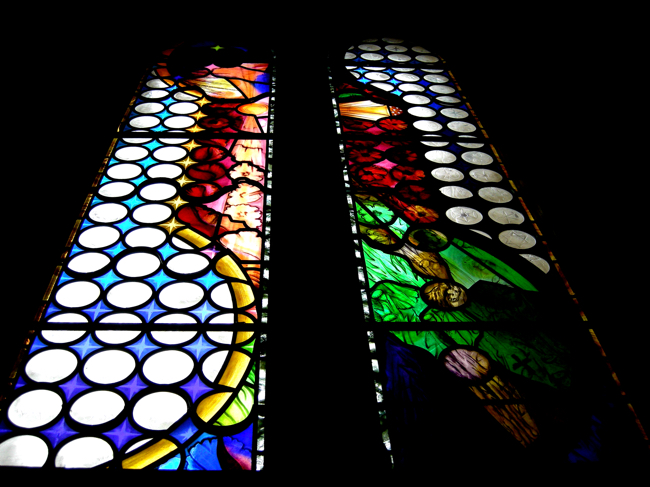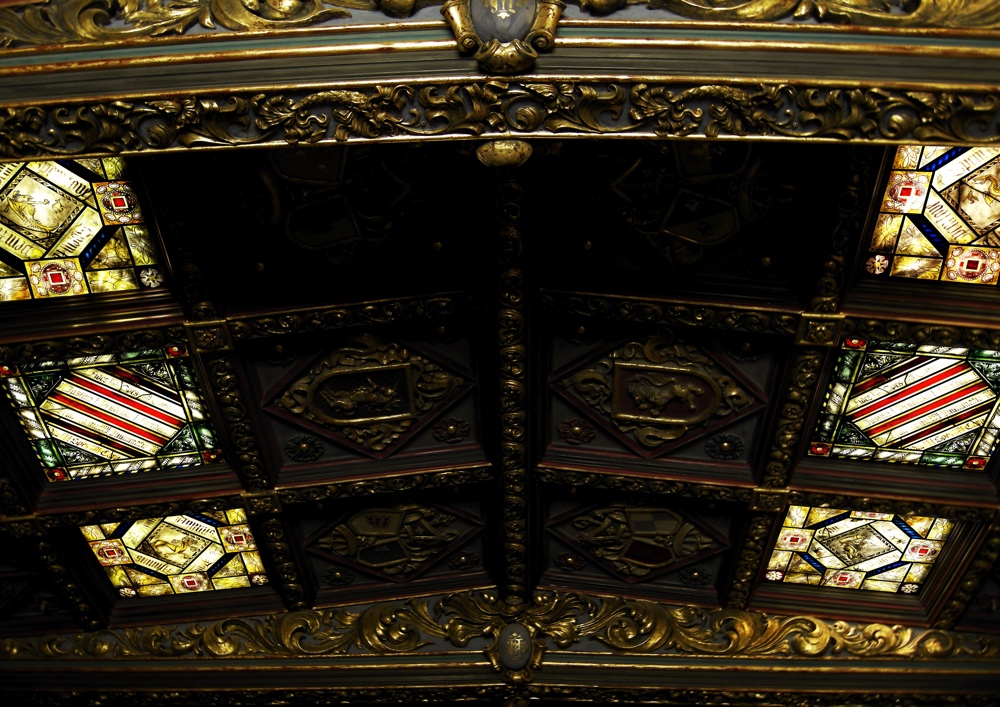There are good modern designs for old buildings.
There are good traditional designs for new buildings.
That’s why we don’t impose a studio-style on the work we do.
The stained glass we make for you will begin with a one-off sketch design which meets the brief and is specifically prepared for the chosen building.
And the cost?
It will take time to calculate the cost. It isn’t something we can give you over the phone in response to a 5-minute talk.
First, we must understand what you want. You are not the same as other clients. Your home or office or church is not the same as other people’s.
When we understand what you want, we’ll tell you the time we’ll take to prepare your design, and what it will cost.
Here’s what works best:
- We meet.
- We prepare your sketch design – at this point we can estimate the cost for your window. This is always a range.
- We prepare a full-sized design. Now we can give you a quote.
Styles of glass painting
Stained glass in any style – for example, two windows of four for the Chapel of the Holy Spirit at Wellington College, Crowthorne:
Here is a detail from a traditional memorial piece we made:

Saint Cecilia
Another time, a client asked for something from the Fibonacci Sequence, hence the spiral lead-lines:

Fibonacci Window
A different client mentioned J.M.W. Turner and the “majesty of the fading day”:

Rose Window
Some projects are large. This is from a set of 16 stained-glass skylights:
Some projects are small. Here the client wanted a sculpture for his mantelpiece, incorporating three painted owls:

Owl Sculpture
A modern window for a large bedroom window that overlooked an ancient wood:

The Hill
A different client wanted two wall-lights like this one here:

The wall-light
Or consider these traditional windows for Polebrook Hall:

Two of four
This coat-of-arms:

Heraldic Arms
And this landing window for a crime novelist – here’s part of it:

Angel and Thurible
A family crest:

Family Crest
One section (out of five) from a tall, abstract window:

The Hereford window
Another abstract window, this one referencing a local myth about a mermaid and a jackdaw:

The Mermaid and the Jackdaw
The point is: different styles for different clients and different buildings. That’s why we don’t have a shopping catalogue to pick and choose from. It’s always a case of designing then making a window which fits the brief and looks perfect in the chosen building.
For more examples, see here.

Detail from a window to celebrate the Diamond Jubilee of Her Majesty Queen Elizabeth II


